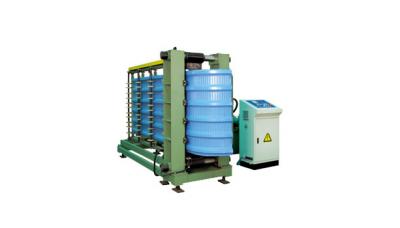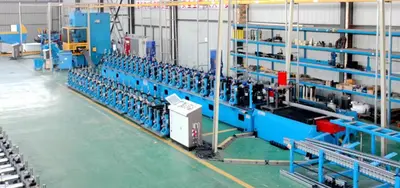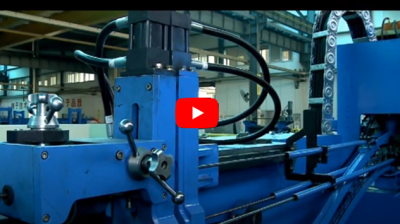Introduction to Polyurethane Sandwich Panel Production Line
Application and Development of Sandwich Panels
With the rapid development of new building systems, particularly steel structure buildings such as various types of industrial factories, urban buildings, and public facilities, the demand for polyurethane sandwich panels, which are easy to transport and simple to construct, has surged. Polyurethane sandwich panels have gradually become a mainstream product in steel structure buildings.
As a result, many construction and building materials equipment manufacturing companies have ventured into this field, continually enhancing the technological content of polyurethane sandwich panel production lines, updating production processes, and significantly promoting the development of the steel structure building industry and new wall materials industry.
Components of Polyurethane Sandwich Panel Production Line
The polyurethane sandwich panel production line generally consists of three main parts: facing material processing equipment, thermal insulation material production and forming equipment, and panel cutting and stacking equipment.
The first part of the polyurethane sandwich panel production line includes a strip decoiler, profiling equipment that presses two continuous strips of facing material into a certain shape, and a surface material preheating device. The facing layers of most typical sandwich panels are rigid metal plates, with the core being rigid polyurethane foam. The facing layer material can also be soft facing materials (such as aluminum foil, fiberglass paper, bituminous paper, etc.). These surface materials are fed into the double track and have smooth surfaces, specific shapes, and colors.
The surface materials are preheated as needed (usually between 40~60℃) before injecting polyurethane insulation material to stabilize the polyurethane polymerization reaction and facilitate the adhesion of the panel surface to the foam.
There are two foaming methods for insulation material production equipment: low-pressure foaming and high-pressure foaming. Low-pressure foaming equipment has poor mixing efficiency, uneven foam, and poor insulation performance. The large internal space of the mixing head can leave residual material, wasting raw materials. Chloromethane solvents, which pollute the environment, are needed to remove these residues.
High-pressure continuous polyurethane foaming equipment uses a mixing chamber pressure of 120~200Bar to ensure strong mixing and pouring. This equipment provides good mixing efficiency, stable and uniform foam cell structure, and good insulation performance. The design of the mixing head prevents polyurethane foam blockage, and when the polyurethane sandwich panel production line stops, the automatic circulation cleaning device starts to work. High-pressure airflow efficiently cleans without leaving residual material, making the operation convenient, safe, and environmentally friendly.
Therefore, high-pressure foaming equipment is more suitable for automated polyurethane sandwich panel production lines. Low-pressure foaming equipment should be technically modified if conditions permit.
Insulation material is formed through the polymerization reaction of raw materials like isocyanate, polyol, foaming agent, catalyst, flame retardant, and stabilizer. Freon F11 was the earliest foaming technology. Although mature, it damages the ozone layer and pollutes the environment.
The advent of pentane foaming technology made polyurethane production processes more environmentally friendly, but pentane is a flammable and explosive hazardous material. When the volume percentage of pentane in air is between 1.4% (lower explosion limit) and 8.1% (upper explosion limit), any spark, flame, or high temperature can cause an explosion.
Hence, polyurethane sandwich panel production lines require high safety measures, including pentane leak detection facilities, pentane leak alarm systems, and pentane leak extraction systems. Equipment in hazardous areas likely to produce sparks, flames, or high temperatures must be explosion-proof to ensure production safety.
HCFC141b is a relatively environmentally friendly foaming agent with high stability and minimal floating particles, ensuring worker health. Considering practical conditions, HCFC141b is currently the most suitable foaming agent for polyurethane sandwich panel production lines.
During the production of polyurethane sandwich panels, the raw material components involved in the polymerization reaction must be accurately measured, with a measurement accuracy of 1% or higher. The measured raw materials are thoroughly mixed in the foaming machine and then evenly poured onto the bottom facing layer, with edges protected by sealing gaskets. During the polymerization reaction, the foam rise location must stay consistent. Ideally, this position is about half a meter into the double-sided press, thus stabilizing the foam and curing process, reducing foam spots and bubbles to some extent.
The temperature of the polyurethane raw material, metal plates, and press control is crucial for producing qualified products. The double-sided press uses a complex heating system to ensure the correct temperature. Regardless of external environmental conditions, the temperature inside should remain constant.
Insulation material forming equipment's double-sided press mainly consists of upper and lower steel tracks. The upper and lower track panels comprise a series of chain plates approximately 200 mm wide, connected by wear-resistant bearings to form a high-strength chain drive system.
The curing time for insulation material forming (the time the sandwich panel remains in the double-sided press) is determined based on the raw materials used and the pre-set panel thickness. A 40mm thick panel requires about 2-3 minutes of curing time. Users can select the length of the double-sided press according to production speed and panel thickness.
The lower track of the double-sided press is fixed, while the height of the upper track can be adjusted by electronically controlled hydraulic jacks, allowing automatic adjustment of panel thickness without manual intervention. The structure can endure approximately 200 kPa of load, ensuring consistent composite panel thickness.
The double-sided press's sides each have a side belt synchronized with the speeds of the upper and lower tracks. The position of the double-sided press's side belts can be adjusted up, down, left, and right by a screw rod driven by a variable frequency motor. The adjustment device must be flexible to operate and have high accuracy. The cutting of fully formed sandwich panels must ensure synchrony precision between the profiling equipment, cutting system, and the double-sided press. Its control system uses an optical encoder to feed back the actual speed and position of the machine, comparing it with set speed or position signals. Through internal calculations, it directly controls the motor's torque.
By introducing the optical encoder pulse feedback signal, this controller can perform not only simple speed synchronization control but also control the motor rotation angle through pulse counting to achieve synchronization. It also features automatic identification correction, adjustable speed ratio, angle compensation, and synchronization of multiple motors, giving the equipment modern electrical control and process management capabilities. This completely resolves the synchronization issues in the polyurethane sandwich panel production line and meets the demand for efficient and simple production.
After cutting the panels, they are cooled, stacked, and wrapped with plastic film. The final step can be manual or automated, depending on the customer's desired level of automation for the polyurethane sandwich panel production line.


 CN
CN
 EN
EN
 fr
fr  de
de  es
es  it
it  ru
ru  pt
pt  ar
ar  th
th  pl
pl  ro
ro 







 Call us on:
Call us on:  Email Us:
Email Us:  #1809, Jianhu Rd, Keqiao, Shaoxing, Zhejiang, China
#1809, Jianhu Rd, Keqiao, Shaoxing, Zhejiang, China 